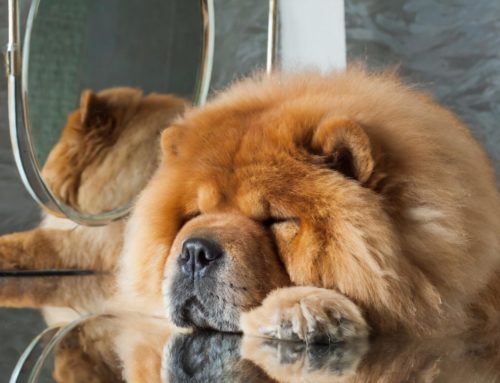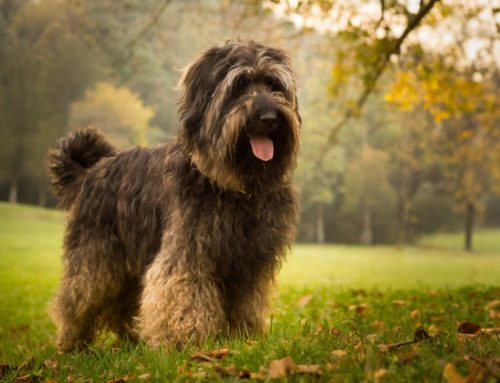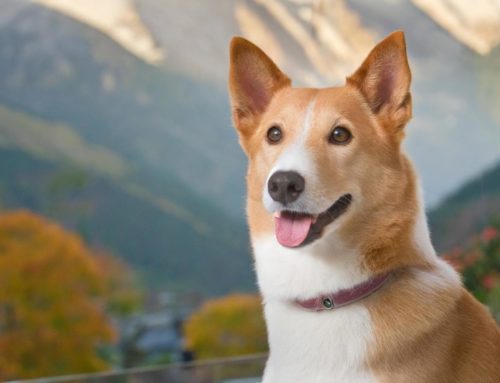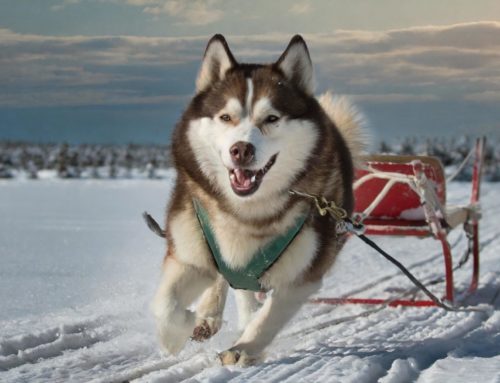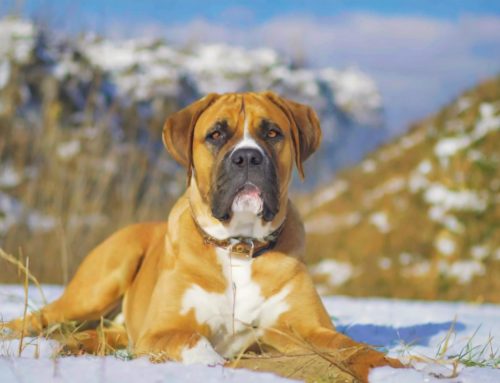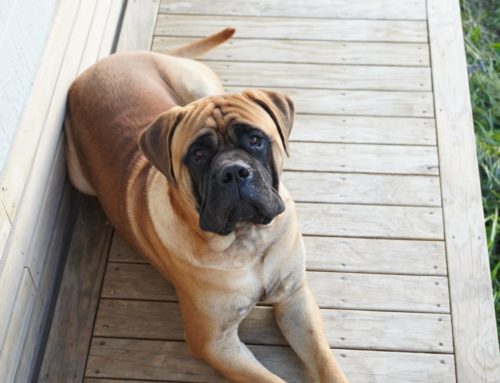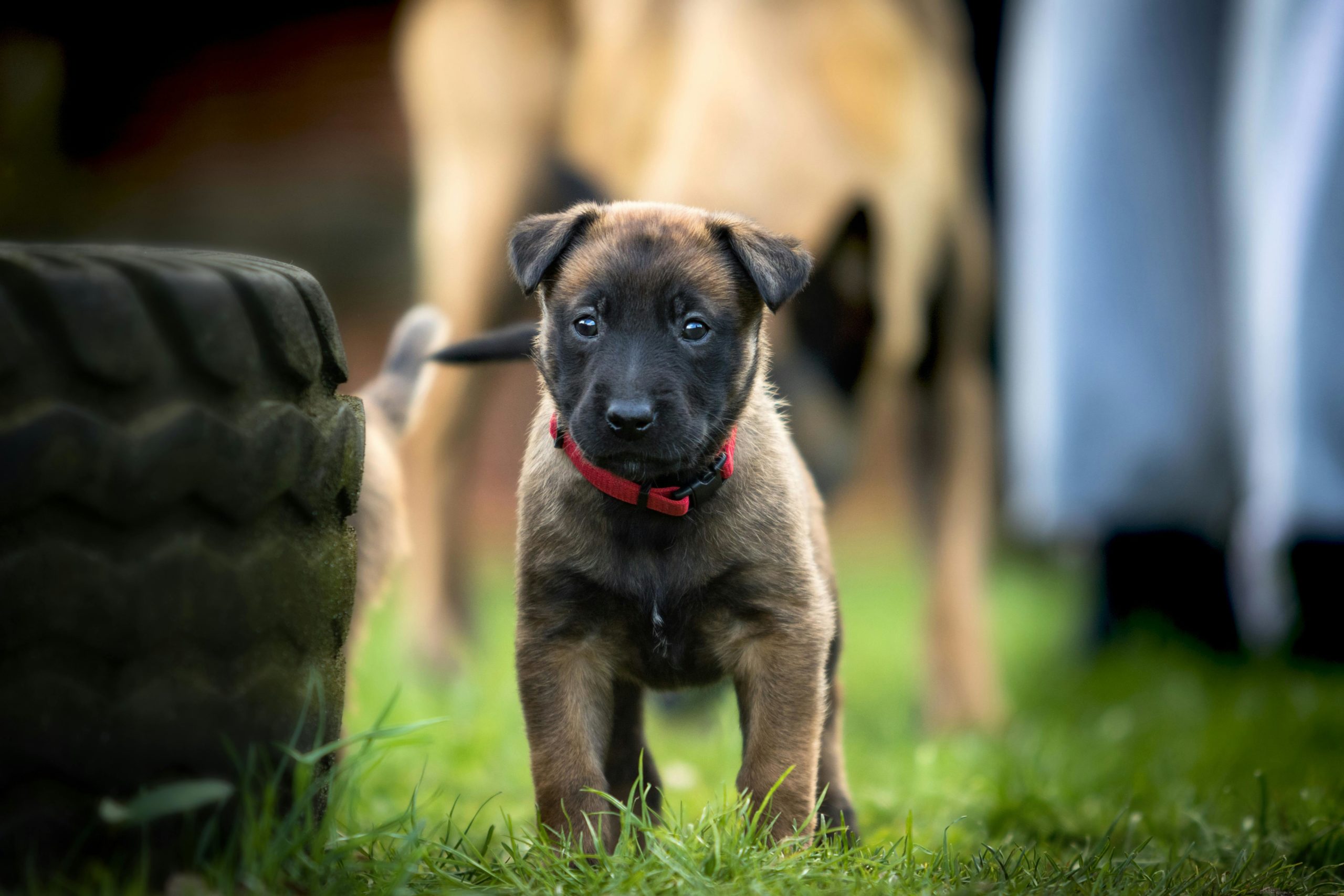
The Belgian Shepherd, with its unique characteristics and different varieties, has a rich history as one of the versatile herding dogs and drovers. The origin of this breed lies in Belgium, where it was developed for herding sheep and other livestock.
The Belgian Shepherd comes in four main varieties that differ from each other in coat and appearance: the Malinois Shepherd, which is known for its short-haired coat and sometimes a black mask; the Tervuerense, Laekense and Groenendael.
Breeders and fanciers of Belgian Shepherd Dogs have always played a crucial role in the development and preservation of this breed. In Belgium, the “Club du Chien de Berger Belge” was founded on 8 May 1892, with a second club joining later.
These clubs were dedicated to the standardisation and recognition of the breed, which eventually led to the recognition of the Belgian Shepherd as an official breed.
In the Netherlands, the Dutch Association for Belgian Shepherd Dogs, together with the Belgian Shepherd Club Netherlands, contributed to the popularity and preservation of this breed. When buying a Belgian Shepherd puppy, a dog with an official pedigree is often preferred, which is important for ensuring breed standards and health.
The Belgian Shepherd is known for its average height at the withers of around 62 centimetres, a straight back and ears are erect. These characteristics, together with their intelligence and versatility, make them a valued member of many households and working environments.
FCI Group 1 Sheep and Cattle Dogs
The Belgian Shepherd, known for its intelligence and versatility, belongs to Group 1 of the Fédération Cynologique Internationale (FCI).
This group includes Shepherd and Cattle Dogs, excluding Swiss Mountain Dogs. The Belgian Shepherd has four varieties: the Tervueren, the Groenendael, the Laekense and the Malinois. Each type is distinguished by a unique coat and appearance, but they share common traits such as their alert, lively nature and strong protective instinct.
The appearance of the Belgian Shepherd
The Belgian Shepherd, is an impressive and versatile dog breed known for its intelligence, vigilance and work ethic. This breed has four different types: the Malinois Shepherd, Tervueren Shepherd, Laeken Shepherd and Groenendael, each with a unique appearance.
The Malinois Shepherd, often compared to the German Shepherd, is short-haired and has a distinctive fawn to black flamed coat. The Tervueren Shepherd and the Groenendael both have long hairs, while the Laeken Shepherd has a rough-haired coat. The average shoulder height of Belgian Shepherds is around 62 centimetres, with males generally taller than females.
All Belgian Shepherds have a strong and muscular body, with a back that is straight and ears that are erect. Regular brushing is necessary to prevent tangles in the coat, especially in the long-haired varieties. These dogs are suitable both as family dogs and working dogs, with a natural aptitude for various tasks such as rescue work.
The Belgian Shepherd Dogs and Belgian Shepherd Club, as well as the Berger Belge Club and the Royal Society Sint-Hubertus, provide valuable resources and contacts between breeders and enthusiasts. These breed associations promote the health and welfare of the breed and help in the socialisation and education of these dogs.
Belgian Shepherd Dog : Malinois Shepherd, Tervueren Shepherd, Groenendael, Laeken Shepherd
The Belgian Shepherd has four varieties: the Malinois Shepherd, Tervueren Shepherd, Groenendael, and Laeken Shepherd. These varieties share similar conformation and temperament, but differ in coat and appearance.
Malinois Shepherd: This variety is known for its short-haired, often fawn to mahogany-coloured coat with a black mask. Malinois Shepherds are known for their work ethic and are often used in police and military services. They are intelligent, alert and possess high energy.
Tervueren Shepherd: These dogs have a long, thick coat that usually comes in shades from fawn to reddish-brown with black. They are known for their elegant appearance and are as energetic and intelligent as their Malinois counterparts. Tervueren Shepherds are versatile in work and sport.
Groenendael: They stand out with their long, black coat. The Groenendael is elegant and graceful, known for its friendly and gentle nature. They are loyal, intelligent and excellent at obedience and agility.
Laeken Shepherd: This least common variety has a distinctive rough, wire-haired coat. Their coat is often fawn-coloured. The Laeken Shepherd is smart, confident and a good watchdog. They are also affectionate and loyal to their family.
Hereditary diseases and disorders
The Belgian Shepherd, like all dog breeds can be susceptible to certain hereditary diseases and disorders.
The following is a list of some of the health problems that can occur in this breed:
- Hip dysplasia: A developmental disorder of the hip joint, which can lead to pain and mobility problems.
- Elbow dysplasia: A disorder affecting the elbows, similar to hip dysplasia, and can result in lameness.
- Epilepsy: A neurological condition that can lead to recurrent seizures.
- Progressive Retinal Atrophy (PRA): An eye disease that can eventually lead to blindness.
- Gastric torsion: Also known as gastric tilt, a life-threatening condition in which the stomach twists and expands.
- Haemangiosarcoma: An aggressive form of cancer that mainly affects blood vessels.
- Hypothyroidism: A condition in which the thyroid gland does not produce enough hormones, which can lead to a variety of symptoms.
- Dermatomyositis: A skin condition that mainly affects young dogs and causes skin lesions and muscle weakness.
The character of the Belgian Shepherd
The Belgian Shepherd, is widely regarded as one of the most intelligent and versatile dog breeds. In particular, the Malinois Shepherd, known for its short-haired, often black flamed fawn-coloured coat, is known for its keen vigilance and active nature.
These dogs excel at various tasks and are therefore often favoured for police and rescue operations. Most Belgian Shepherds are energetic and have a strong drive to work and learn, making them excellent rescue dogs and reliable companions.
They have an average shoulder height of about 62 centimetres, a straight back and ears that stand upright, giving them an imposing appearance. Their bodies are strong and athletic, capable of both physical and mental challenges. These dogs are extremely loyal to their families and form a strong bond with their owners.
Their high intelligence makes them easy to train, and they respond well to positive reinforcement. These breeds are known for their energy and work ethic. They are active and require plenty of exercise and mental stimulation to stay happy.
Belgian Shepherds are also very watchful and protective. They can be reserved towards strangers and tend to protect their family, which makes them excellent watchdogs.

The Care of the Belgian Shepherd and why a pedigree dog
The care of a Belgian Shepherd, requires specific attention, especially when it comes to coat care and exercise. When deciding to breed or purchase a Belgian Shepherd puppy, it is important to choose a dog with an official pedigree. This helps combat hereditary diseases and guarantees that the dog meets breed standards.
The coat of the Belgian Shepherd, often fawn in colour in the Malinois variety, requires regular brushing to remove tangles and dirt, especially during moulting, which occurs twice a year. When brushing, special attention should be paid to areas where tangles can form, such as around the muzzle and tail, and where the coat is denser.
These alert dogs need plenty of exercise. Daily walks and playtime are essential to keep them physically and mentally stimulated. Their ears, which are erect, and the rest of the body should be checked regularly for signs of illness or injury.
Choosing a pedigree Belgian Shepherd, a practice encouraged since September 1891 since the founding of the breed club in Cureghem, ensures the quality and health of the breed. Such a pedigree dog comes not only with a guarantee of breed purity, but also with the assurance that the dog has been bred healthy.
Socialisation and education of the Belgian Shepherd
The socialisation and upbringing of the Belgian Shepherd are crucial for the development of a balanced and well-adjusted pet. Like all dogs, the Belgian Shepherd needs consistent training and socialisation from an early age to become a full-fledged member of the family.
The process of socialisation involves exposing the dog to a variety of people, places, sounds and experiences. This helps them learn how to react to different situations and promotes healthy, social behaviour.
The Belgian Shepherd, with its distinctive erect ears, is naturally alert and watchful, which makes proper socialisation even more important to avoid excessive restraint or aggressiveness. As for education, this intelligent and active dog requires daily mental and physical stimulation. Walks a day are essential for their well-being.
These activities provide not only the necessary exercise, but also opportunities for ongoing training and behavioural reinforcement. Consistent, positive training methods work best for the Belgian Shepherd. This breed responds well to rewards and praise, making the learning process enjoyable and effective.
How much experience does a Belgian Shepherd require
The Belgian Shepherd, can be challenging for both experienced and inexperienced dog owners. For experienced owners, this breed offers the opportunity to further develop their skills in dog training and behaviour.
These owners are usually better prepared for the energetic and sometimes stubborn nature of the Belgian Shepherd. They can more effectively manage the complex training and stimulation these dogs require. For inexperienced dog owners, however, a Belgian Shepherd can be more challenging.
It is important that new owners are aware of the time and dedication required to raise and train these active dogs. Inexperienced owners may need additional support and guidance, for example by attending obedience courses or engaging a professional dog trainer.
Is training necessary?
Training is absolutely necessary for the Belgian Shepherd, a breed known for its intelligence, energy and work ethic. These dogs have a strong need for mental and physical stimulation, and without adequate training, they can develop undesirable behaviour.
The Belgian Shepherd responds exceptionally well to training, thanks to its keen intelligence and desire to learn. Consistent, positive and structured training methods work best for this breed. Training should start while they are still puppies and continue into adulthood to refine their behaviour and skills.
Apart from basic obedience training, it is also important to train the Belgian Shepherd in social skills. This breed can be naturally reserved towards strangers and needs to learn how to behave in a variety of social situations.
Due to the Belgian Shepherd’s active nature, regular exercise is also a must. Activities such as walking, running and agility training are excellent ways to channel their energy and stimulate them mentally.
How much exercise does a Belgian Shepherd need?
The Belgian Shepherd, requires significant daily exercise to stay healthy and happy. Known for their work ethic and athletic build, these dogs need at least one to two hours of active exercise per day. This can be divided between various activities such as walking, running, playing, and mentally stimulating exercises.
Long walks are essential, and if they can be combined with training exercises such as fetch or agility training, even better. Belgian Shepherds need not only physical challenge, but also mental stimulation to sharpen their intelligence and problem-solving skills.
Because of their versatility, Belgian Shepherds are also excellent for more advanced sports such as flyball, schutzhund, or tracking. These activities can satisfy both the dog’s physical and mental needs.
It is important to emphasize that although Belgian Shepherds need plenty of exercise, this must also be tailored to the individual dog, its age, health, and energy level. Insufficient exercise can lead to behavioral problems due to boredom and pent-up energy.
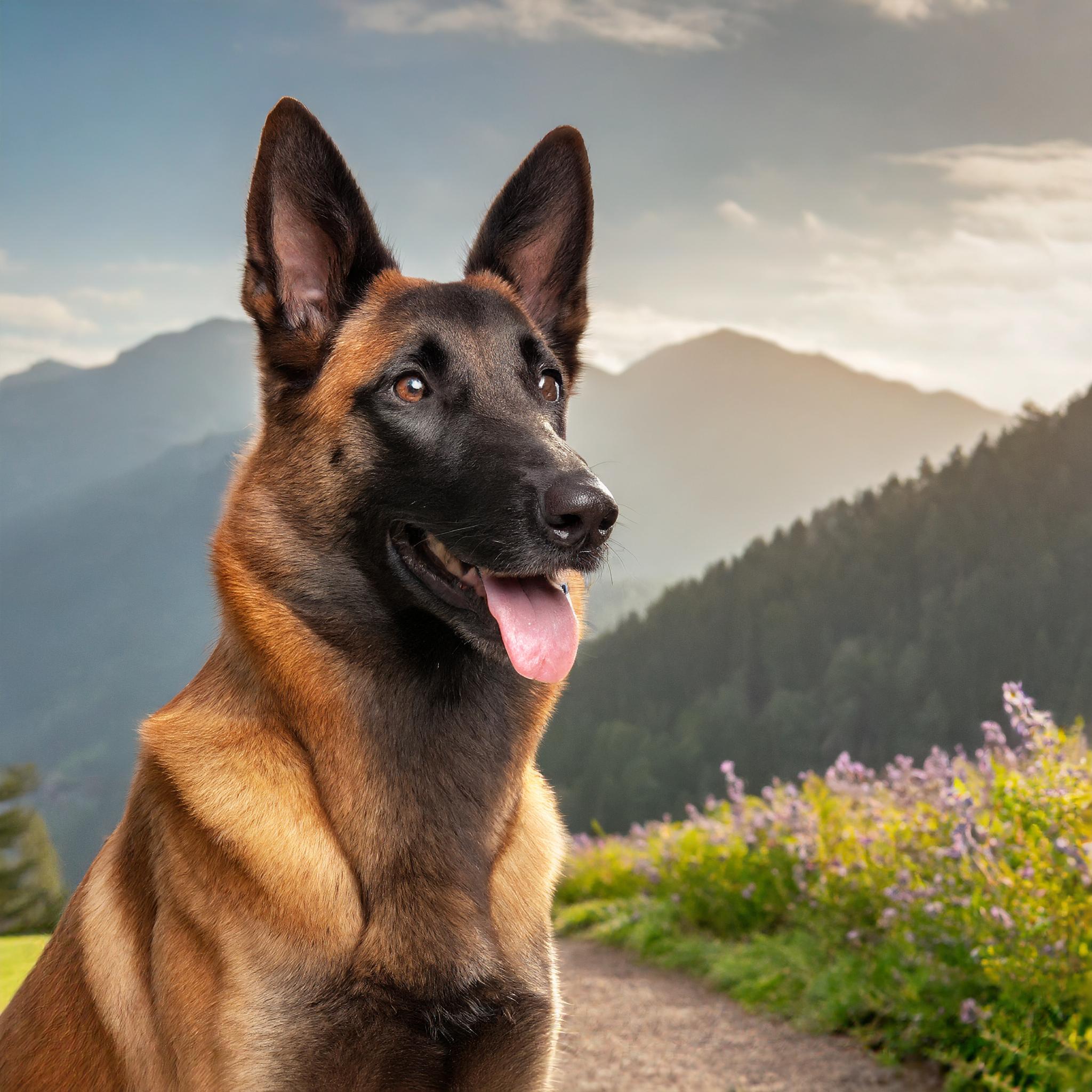
How is it getting along with children?
The Belgian Shepherd is known for its loyal, protective nature and can be a great companion for children, provided handling is properly supervised. These dogs are intelligent and can be well trained, which enables them to interact effectively and safely with children.
Belgian Shepherds are generally patient and friendly, but as with all dogs, supervision is needed when interacting with children. Young children need to learn how to interact respectfully and gently with the dog. It is crucial to teach both dog and children what is appropriate behaviour to avoid accidents or misunderstandings.
Thanks to their work ethic and energy, Belgian Shepherds can keep up well in active games and activities with children. However, they can also show their herding instinct and try to ‘herd’ children, which can be controlled with proper training and guidance.
It is important to socialise the Belgian Shepherd from an early age and teach it to deal with different situations, people and especially children.
Advantages of a Belgian Shepherd
- Intelligence and Trainability: Belgian Shepherds are highly intelligent and learn quickly, which makes them excellent for obedience training and various dog sports.
- Loyalty and Protective Drive: This breed is known for its deep loyalty to family and natural protective instinct, which makes them good guard dogs.
- Energy and Work Drive: Belgian Shepherds have high energy and work ethic, making them ideal for active families or for tasks such as tracking, rescue and sports.
- Social and Adaptable: With proper socialisation, they get along well with other pets and adapt well to different environments.
Disadvantages of a Belgian Shepherd
- High Exercise Requirement: This breed needs a lot of exercise to stay healthy and happy, which can be a challenge for less active owners.
- Potential behavioural problems: Without sufficient mental and physical stimulation, Belgian Shepherds can become destructive or hyperactive.
- Health Problems: Like many large breeds, they can be prone to hereditary health problems such as hip and elbow dysplasia.
- Intensive Care: Depending on the coat variety, grooming their coat can be intensive, especially during shedding periods.
How old a Belgian Shepherd gets
The life expectancy of a Belgian Shepherd averages between 12 and 14 years, although this depends on several factors, including genetics, lifestyle and general health. As with other dog breeds, responsible breeding practices, good nutrition, regular exercise and adequate veterinary care can contribute to a longer and healthier lifespan for these dogs.
Price of a Belgian Shepherd
The Belgian Malinois, a highly regarded working dog breed, is celebrated for its sharp intelligence, ease of training, and abundant energy. Here’s an insight into what you might expect to pay for a puppy, along with suggestions for similar breeds and other considerations:
Price of a Belgian Malinois Puppy in the US:
- Typical Range: The cost for a Belgian Malinois puppy from a respected breeder is generally between $1,500 and $3,000.
Price Influencing Factors:
- Breeder’s Reputation: Puppies from breeders known for producing working or champion lineage dogs are priced higher.
- Pedigree: AKC-registered Belgian Malinois puppies come with a higher price tag compared to non-registered ones.
- Geographical Location: Expect higher prices in regions with a more expensive cost of living.
- Age: Price points tend to be lower for adult dogs than for puppies.
- Purpose Bred: Dogs bred for specific roles like police or military service may carry a premium price over those bred as companions.
Similar Breeds Worth Considering:
For enthusiasts of the Belgian Malinois’ smart, devoted, and dynamic nature, the following breeds might also pique interest:
- German Shepherd Dog: Known for their loyalty and versatility with prices ranging from $800 to $2,500, they are generally a bit larger than the Malinois.
- Dutch Shepherd: Shares a similar energetic and intelligent disposition, with prices between $1,200 and $3,000.
- Tervueren: A variant of the Belgian Shepherd with a thick, long coat necessitating more grooming, priced similarly to the Malinois.
Additional Advice:
- Thorough Research: Given their high energy and training needs, Belgian Malinois are best suited for experienced owners. Make sure their active lifestyle matches yours.
- Visit the Breeder: Meeting the puppy’s parents and checking the breeding facility can offer insights into the puppy’s health and behavior.
- Prioritize Training: These dogs excel with early, consistent training and socialization, setting the foundation for a well-behaved adult dog.
- Ensure Activity: Bred for demanding tasks, they thrive on daily physical and mental challenges.
Locating a Belgian Malinois Breeder:
- Belgian Shepherd Dog Club of America: A resource for finding ethical breeders specializing in Belgian Malinois.
- Online Kennel Directories: Use these to explore breeders near you, reaching out directly for specifics on availability and costs.
Remember: Opting for a dog is a commitment spanning the pet’s lifetime. While Belgian Malinois may be rarer in shelters, considering adoption could lead you to discover breeds with similar traits at a significantly reduced cost, enriching your life and offering a forever home to a deserving animal.
